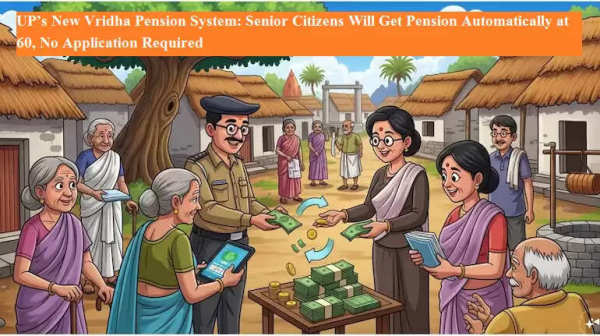
UP Government Introduces Auto-Approval Pension for Seniors: Here’s How the New System Works
The Uttar Pradesh government has announced a major reform in its social welfare system by introducing an automatic pension approval process for senior citizens. Under the new mechanism, individuals will start receiving the old-age pension as soon as they turn 60—without filling out any application forms. The initiative, approved during a cabinet meeting chaired by Chief Minister Yogi Adityanath, aims to make pension disbursement faster, simpler, and fully digital.
The government has stated that this upgraded system will identify eligible beneficiaries through their Family ID, eliminating the need for manual paperwork. Once a citizen turns 60, their eligibility will be automatically verified, and the government will request their consent. After the individual grants approval, the pension will be sanctioned within 15 days and transferred directly to their Aadhaar-linked bank account.
Under the existing system, citizens have to apply online, submit age and income documents, and wait for approval before receiving their pension. Many elderly individuals find this process complicated and time-consuming.
The new digital framework aims to remove all such hurdles. Pension eligibility will now be determined automatically using the Family ID database. The government will then contact the citizen—through SMS, WhatsApp messages, or phone calls—to obtain consent for activating the pension. If the person does not respond digitally, local officials will visit their home to complete the consent process.
As soon as consent is received, the approval process will begin immediately and will be completed in a maximum of 15 days.
Launched in July 2022 under the “One Family, One Identity” initiative, the Family ID program aims to create a verified database of every household in Uttar Pradesh. This helps ensure that government schemes reach eligible families without delays.
Key features of the Family ID system include:
A unique 12-digit ID assigned to each family
Integration with ration card details and other government databases
Easy identification of eligible family members for welfare benefits
Coverage of all family members, including earning individuals, spouses, children, parents, siblings, and dependents
Using this database, the government can track citizens approaching the age of 60 and determine who qualifies for the old-age pension.
The new digital system will follow a multi-step process to ensure that no eligible beneficiary is left out:
Automatic age tracking using Family ID to identify people nearing 60.
Consent request sent via SMS, WhatsApp, or phone call.
Home visits by local officials if digital communication does not receive a response.
Pension approval within 15 days of receiving consent.
Direct transfer of the pension to the Aadhaar-linked bank account.
This ensures a smooth workflow and minimizes dependency on physical applications.
The old-age pension scheme is designed to support economically weaker senior citizens. Under the scheme, every eligible person receives:
₹1,000 per month directly in the bank account,
regardless of gender,
provided they meet the eligibility criteria.
To qualify for the pension:
The applicant’s age must be between 60 and 150 years.
They must fall below the poverty line or within the specified annual income limit.
The income limit is ₹46,080 for rural areas and ₹56,460 for urban areas.
Currently, applicants need to complete an online form and submit documents for age, income, and identity verification. The new system eliminates this entire process.
For many senior citizens, navigating online forms, uploading documents, or visiting government offices can be challenging. The state’s new digital reform is designed to make their lives easier. Automatic identification, simple consent procedures, and quick approval timelines will ensure that beneficiaries receive financial support without extra effort.
By removing paperwork and bringing transparency into the pension process, the Uttar Pradesh government aims to ensure that every eligible senior citizen gets timely assistance—right when they turn 60.